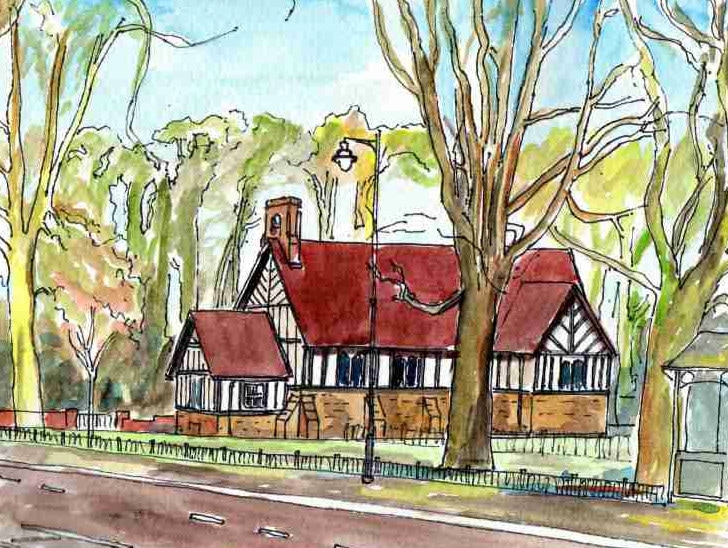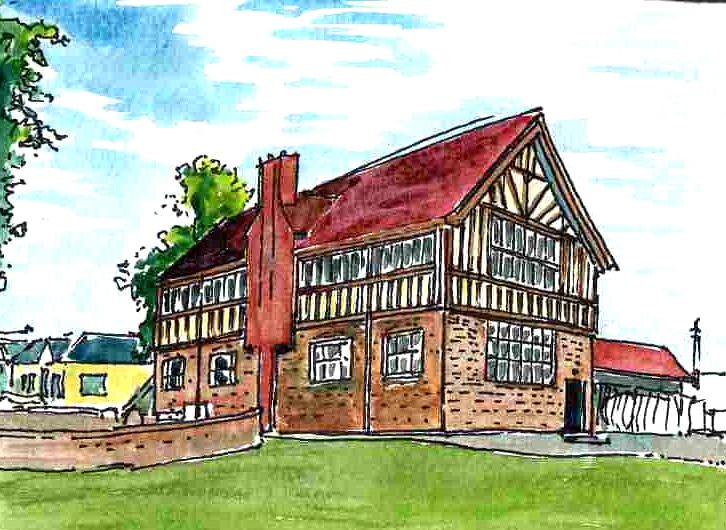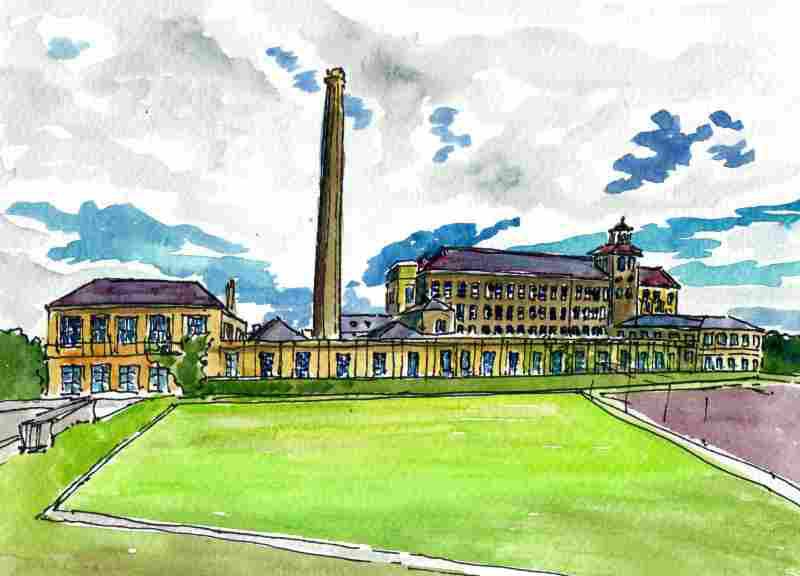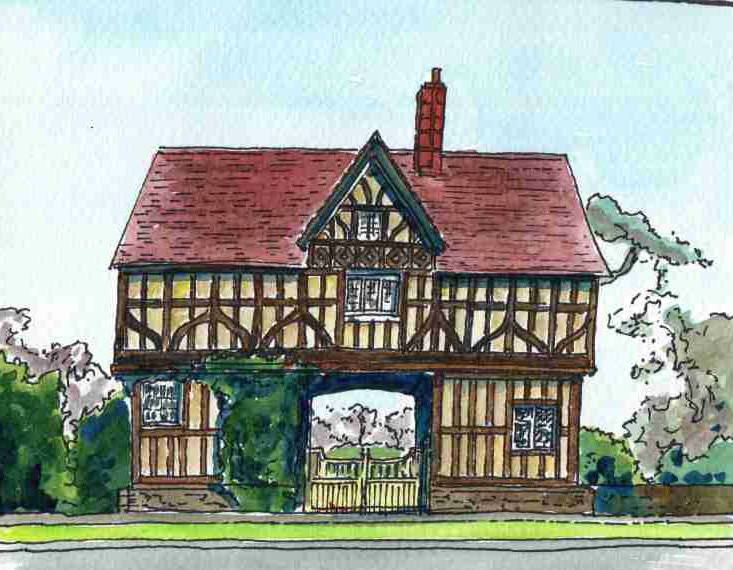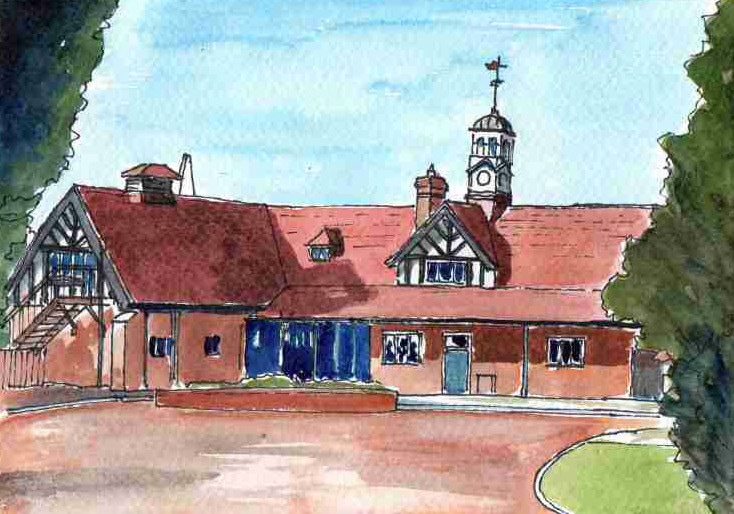Industry- Sion Mills
|
One of the most successful linen companies in the area was Herdman’s. Two brothers from Belfast, wishing to expand took a lease on an existing corn mill at Sion Mills in 1835 and by the 1850’s things were going so well that the prominent Belfast architect William Henry Lynn was employed to build a new mill nearby with a fashionable ‘Italianate’ tower. The tall brick chimney was built in 1877. In 1919 a hydroelectric power station was installed on site. The name ‘Sion’ derives from the Gaelic word ‘Sidhean’, meaning a fairy hill.
The brothers created a village on the main road above the factory for their workers with rows of good quality terraced houses and other facilities. Their home, just off the main street, was designed as an Itailanate villa but this was completly obsured by a remodelling of the house into an English half timbered style by leading London architect W. F. Unsworth in 1884. Unsworth was brother in law of Emerson Tennent Herdman, and the architect employed the same style on many buildings in the village. Its Gate Lodge is based upon a careful examination of Sixteenth Century English precedents and heralds the house beyond. Unsworth was influenced by the Arts and Crafts Movement which had grown out of a concern for the effects of industrialisation on design, traditional skills the lives of ordinary people. The Tudor Revival style reflected an earlier, more simple, age. The style was employed for other villages developed by enlightened industrialists such as Bourneville near Brimingham by Cadburys (1890’s) and Port Sunlight by Lever Brothers near Liverpool (1880’s). Cadbury apparently visited Sion Mills in advance of his development. Also in the style and by the same architect are the stables. These have been recently conserved to a high standard they house a museum and café. |
|
Herdman's Mill
Alexander Terrace, Sion Mills.
Sion House
Sion House Gate Lodge.
Sion House Stable Block
|

